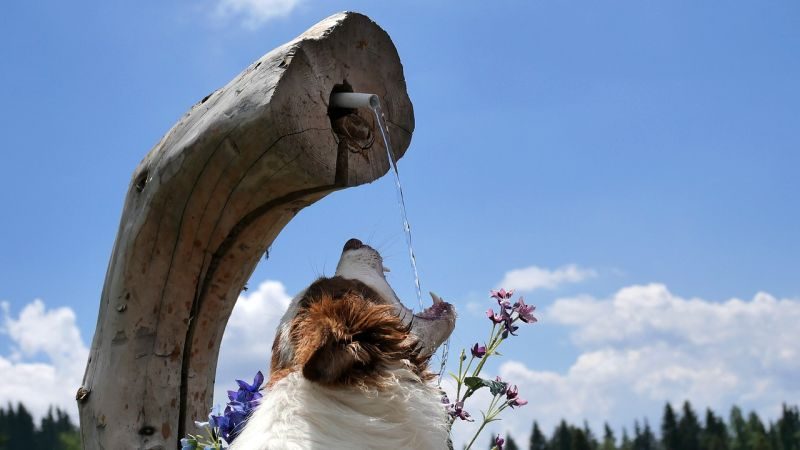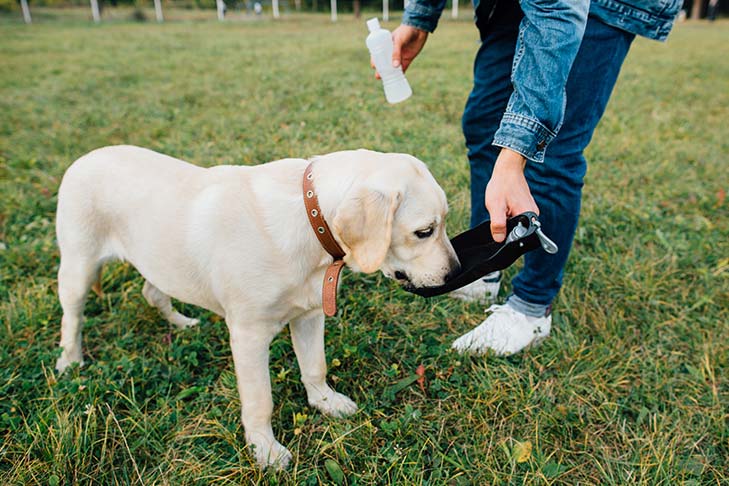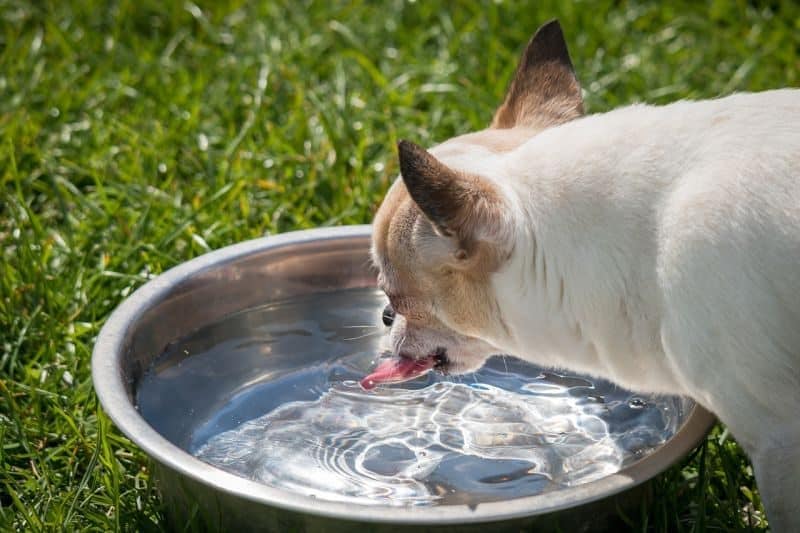- Leave Water Bowls Around. Subtly leaving a few water bowls around your house can encourage your dog to start slurpin’! …
- Boost Their Electrolytes. Similar to Gatorade, Pedialyte is an age-old trick to rehydrate humans. …
- Give them some Bouillon. …
- Try Ice Chips.
Adrienne is a licensed dog trainer and a former veterinary assistant who collaborates with some of the world’s top vets.
Your dog’s rehydration should be your top priority if it has been vomiting frequently. Many dog owners worry that their dogs won’t eat if their stomachs are upset. However, the real, main issue of vomiting is not drinking. Dogs can go several days without eating, but dehydration can cause them to pass away quickly.
Don’t Let Your Dog Drink Too Much Too Fast
After becoming dehydrated, be cautious when letting your dog drink water or Pedialyte.
He might become sick and end up throwing up if he downs a lot of water. This indicates that in addition to losing all the water he just drank, he will also lose some additional liquid (in the form of stomach fluids).
So, try to space outyour dog’s drinking opportunities. Depending on his size and the degree of his dehydration, you’ll need to use your best judgment and err on the side of caution regarding how much you should let him consume at a time.
For instance, if your dog typically consumes 12 ounces of water at a time, you might want to start by allowing him to consume about 4 ounces. Make sure he doesn’t throw up while you wait for about 5 to 10 minutes and then allow him to have another 4 to 6 ounces.
Up until you’re certain that your dog won’t gulp the water down too quickly or vomit, repeat this process three or four times.

What Are the Symptoms of Canine Dehydration?
Since our dogs are unable to communicate with us when they are thirsty, how can you tell if your dog is dehydrated? By being aware of the symptoms of dehydration, dog owners can act quickly and identify potential serious medical issues before they result in life-or-death situations. According to Dr. Veterinary emergency and critical care specialist Jerry Klein states that the following are signs of canine dehydration:
The simplest way to check for dehydration is to notice a loss of skin elasticity. To test for it, Dr. Klein advises holding a small patch of the dog’s skin close to his shoulder blades, lifting it up, and then letting it go. Watch carefully as it falls back into place. The skin instantly returns to its original position in well-hydrated dogs. On the other hand, the skin of dogs who are dehydrated will take longer to recover.
When you are certain that your dog is properly hydrated, it is a good idea to test his skin first so that you can get a sense of how normal skin elasticity feels. Because their skin may not be as elastic, even under normal circumstances, owners of wrinkly breeds like Bulldogs or Neapolitan Mastiffs should take special note of this, says Dr. Klein.
Another examination is to feel your dog’s gums for stickiness and dryness. As you do so, measure the capillary refill time. Remove your finger after gently pressing it against your dog’s gums. The area where you pressed will briefly turn white in a well-hydrated dog before quickly returning to its normal pink hue. In dehydrated dogs, the capillary refill time takes much longer.

Make sure your pet drinks plenty of fresh, cool water first if you suspect dehydration, especially in hot weather. Dehydrated dogs may lose their appetite, which makes them eat less and eliminates the water content they would normally get from their food, creating a vicious cycle.
Additionally, if his body isn’t getting enough water, electrolyte-containing fluids are drawn out of the cells, leading to an imbalance that affects his organs. This means that he might need to have his electrolytes replaced. You can try giving your dog an electrolyte-enhanced liquid like Pedialyte if he is not throwing up. It’s best to check with your veterinarian for dosage recommendations.
“Take your dog to the vet right away; this is considered a medical emergency if your dog exhibits any of the above-mentioned signs of dehydration, persistent vomiting, or you suspect heatstroke,” advises Dr. Klein. “The veterinarian can administer intravenous or subcutaneous fluids to replace lost fluids as soon as possible and stop further loss. ”.
Your veterinarian will want to identify and treat the underlying condition because dehydration is frequently a sign of a more serious issue. Depending on your dog’s other symptoms, this procedure may involve x-rays, blood work, or other tests.
Vomiting and Diarrhea Can Also Cause Dehydration
So far, we’ve mostly talked about dehydration brought on by vigorous exercise or exposure to high temperatures. But it’s crucial to remember that vomiting and diarrhea can both cause dehydration.
You should consult your veterinarian for advice if your dog has become dehydrated for any of these reasons.
This is crucial because, in addition to rehydrating your dog, you also need to take the appropriate steps to stop the symptoms that are leading to fluid loss.
To make it simpler to rehydrate your dog, your veterinarian might need to give him or her medications to stop the vomiting or diarrhea.

FAQ
What can you give a dehydrated dog?
Give your dog small amounts of water to drink every few minutes or give him pieces of ice to lick if he’s mildly dehydrated. You could also give your dog Ringer’s lactate, an electrolyte replacement fluid, to help restore its electrolyte balance.
How can I hydrate my sick dog at home?
A sick dog should be given chicken or beef broth to rehydrate. If your dog is dehydrated but still won’t drink any water, try this option first. He enjoys the flavor of the chicken or beef in the broth and will quickly finish the entire bowl.
How long does it take to rehydrate dog?
For small animals, 18 cup of fluid per hour is sufficient, while larger dogs benefit from 14 cup of fluid per hour. Call your veterinarian right away if your pet is showing signs of severe dehydration. Keep an eye on your dog’s health – See if your pet feels better after getting hydrated within the next few hours.